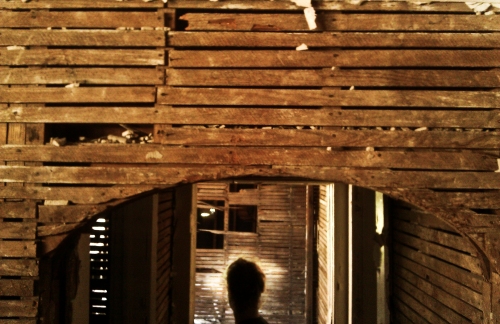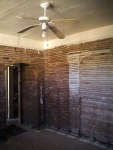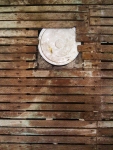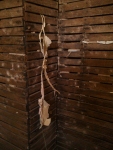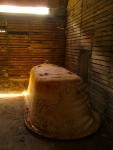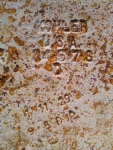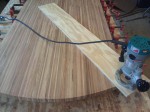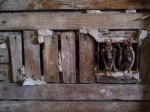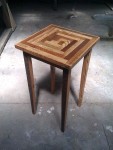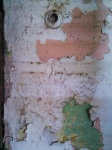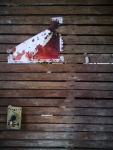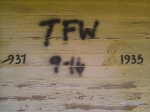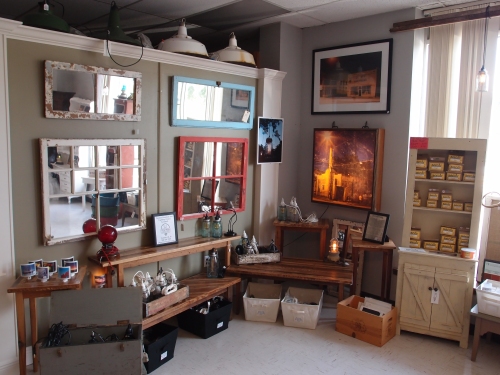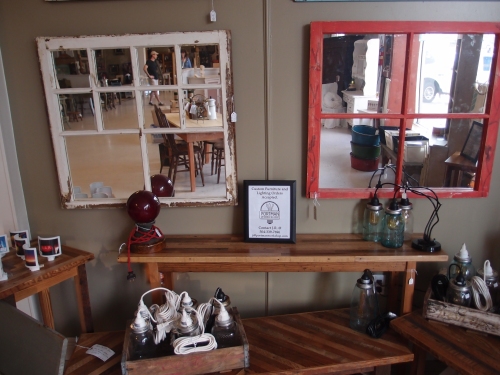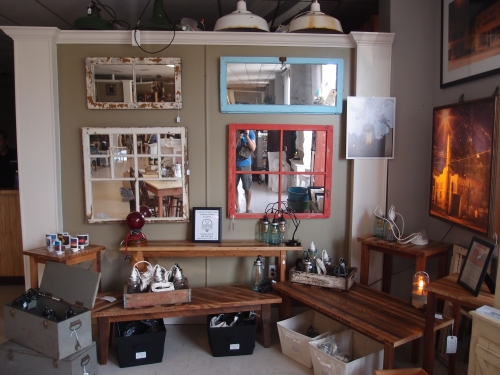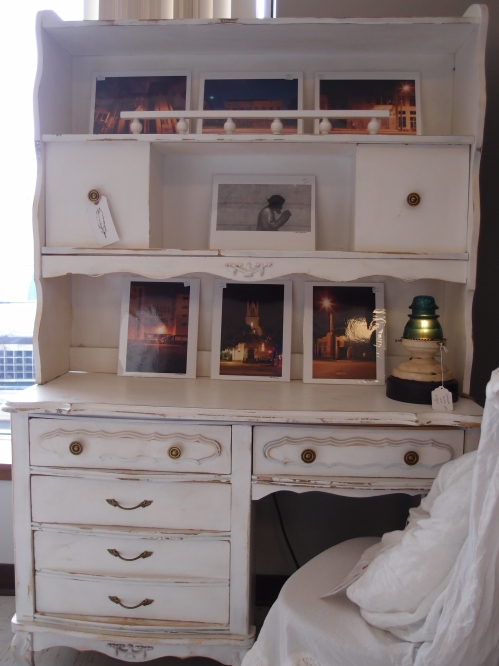I never went to design school, or ever had a class in furniture design, so the things I make are purely influenced by my surroundings and however my untrained mind chooses to translate raw material into functional form. Since I work in historic preservation in New Orleans, I regularly find myself in edifices that are in an advanced state of decay. Inside these buildings, I often play archeological inspector, following the clues left behind by the former generations of inhabitants and the changes to the structure itself perpetrated by both man and nature. Once a house starts to degrade and the plaster falls down or is “gutted” in order to put up drywall (a far inferior finish by the way), then all that is left is the lath and studs. Laths are the thin wooden strips that cover the walls and ceiling of old houses that were originally installed to hold up the plaster. A house striped down to lath is full of texture and patterns and has a skeletal feel, like being in the belly of a wooden whale. Here are some pictures of one such house that I was in recently on a site inspection after hurricane Isaac, and all the textures and archeological ephemera therein that will be my impetus for furniture and lighting design in the future. I’ve mixed in a few images of things I’ve made from similar materials to show what the detritus can become with a little vision and elbow grease.
Category Archives: tables
Clayton House Marketplace
While the rest of the gulf south frantically filled up their gas tanks and bought emergency supplies, i moved a bunch of my furniture and lighting designs into a new shop in Covington, Louisiana called Clayton House Marketplace. It wasn’t until the owner of the shop said something about a mandatory evacuation in Grand Isle that I realized that something was going down and that Isaac was heading our way. So, when you get back from wherever it is you take your hurrication, stop by the Clayton House at 1600 Collins Blvd in Covington to peruse the myriad of furniture, crafts, and interior decor from many different vendors. Their phone number is 985-892-6368 and they are open M-F, 9-4.
Filed under lamps, Photography, tables
Danish oil finish
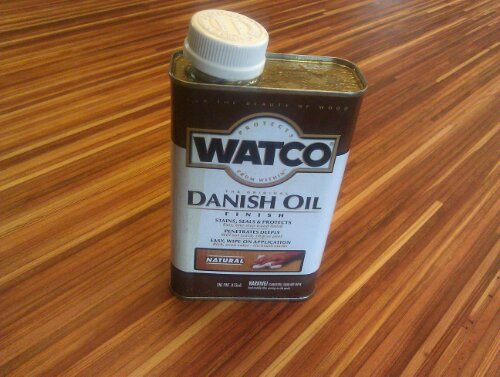
It is said that applying a finish to a piece of woodworking can take equally as long as the time spent building it. There have been books and books written about the subject of selecting and applying finishes, and some woodworkers make their own (Sam Maloof’s mixture is quiet famous and many swear by it). When I first started building furniture, I went to The Green Project (new orleans’ best construction salvage supply store) and bought up as many types of finish as I could get my hands on to test out. polyurethane, varnish, shellac, wax, tung or linseed oil…what’s the difference? There is no simple answer to this question of course (though you can go to lumbetjocks.com and listen to woodworkers argue endlessly on the subject), and to compound the difficulty of selecting a finish, the brands of each finish need to be considered, as some work better than others, and you’re local big box store only carries a hand-full of selections that most pros thumb their noses at. But finishes are expensive, and having to mail order your preferred finish adds the expense of shipping, so I tend to focus my finishing choices on what I can get locally. I mostly build tables out of antique long leaf pine, so I looked for a finish that is good that particular species of wood. though this may seem obvious, testing the finish on the exact type of wood you are working with is important, as each wood has a different grain structure and absorbs the finish differently. One of the finishes that I liked best in ease of application and resultant look us Watco Danish Oil. Locally available at Lowe’s, no special ordering is required, and application could not be simpler: flood the surface with the Danish oil and spread it around with a brush or rag. The change is immediate, richening and deepening the tone of the wood.
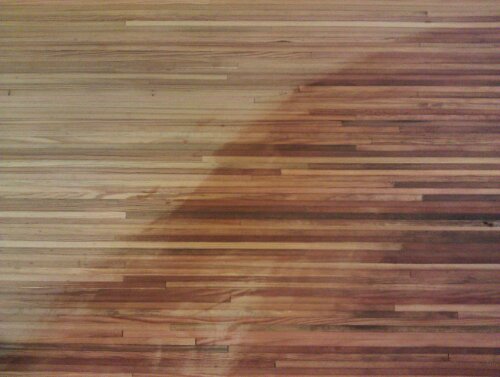
What is also great about Danish oil is that it is a finish unto itself and does not necessarily require further protection after application. It has a natural satin sheen, which looks great on its own. Because this particular project is a table top, I am going to add several coats of water-based polyurethane (I like the new Rustoleum line). So if you have some thing that needs a finish and you don’t feel like testing out a wide range of products, I’d give Danish oil a try.
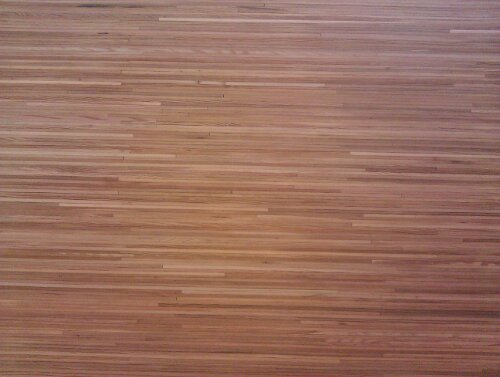
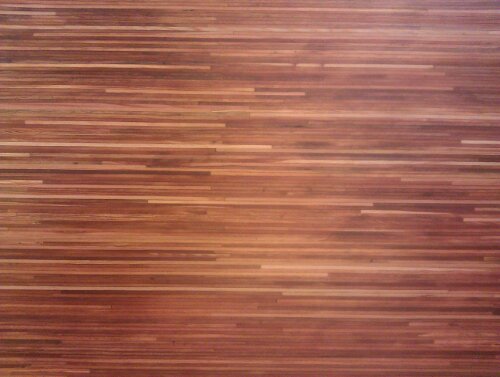
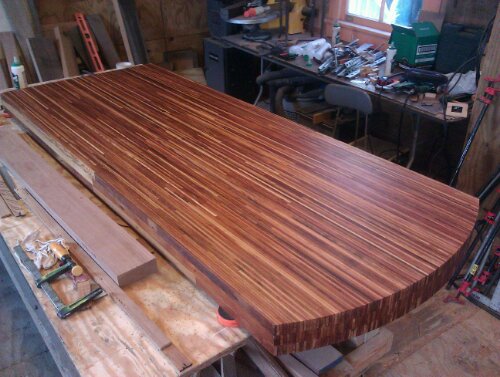
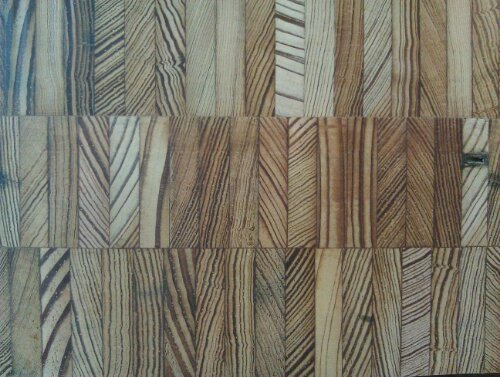
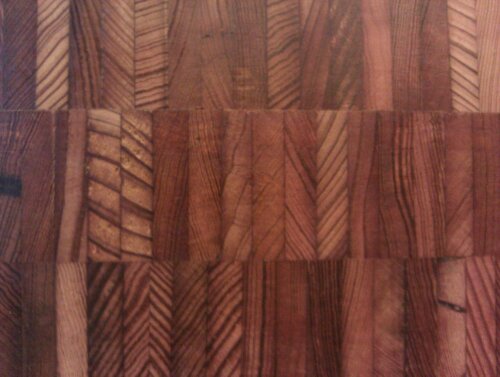
Filed under Millwork, Salvage, tables, Uncategorized
Cutting an arc
The lath table commission progresses, and today I cut the Italianate arc on one end. The method for this is simple: a router attached to a board, pinned on one end so that the other end swings in an even curve. To make the cut easier on the router bit, I first cut away the excess lath with a jig saw. The distance between the pin and the router proscribe the severity of the arc. This arc was cut to match the existing shapes of the arched doors and windows in the house. The cut-off area looks like a city skyline, so i’m going to make a base for it and give it to the guy who commissioned the table.
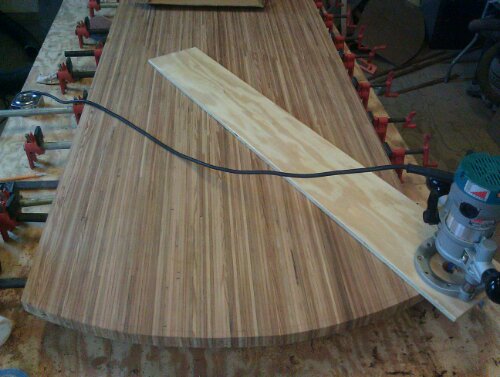
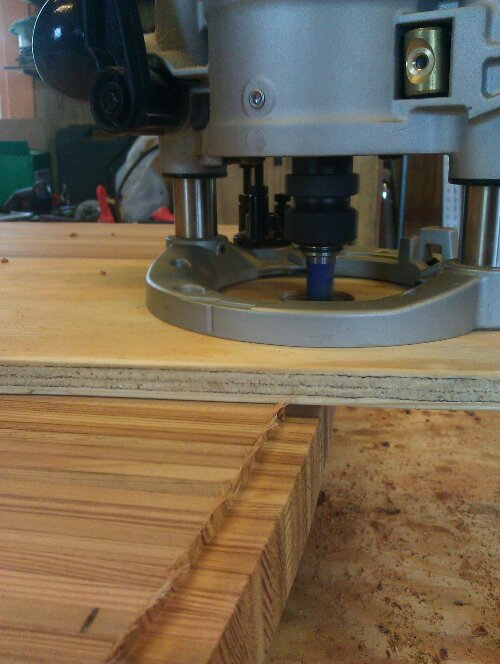
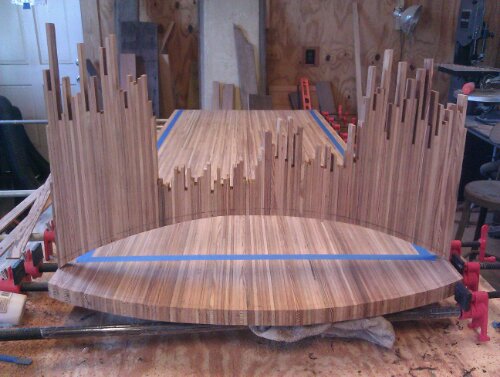
Filed under Millwork, tables, Uncategorized
Hypnotic Table
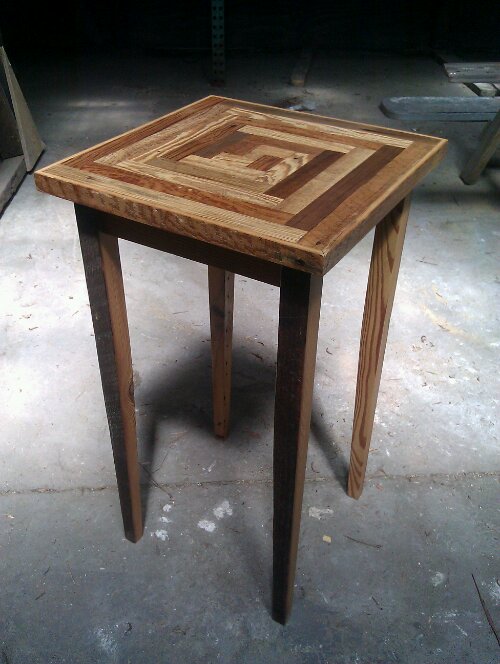
Experimenting with new table top designs, utilizing wood lath as usual, I built this end table with spiral top. Don’t stare too long or you might lose your sanity.
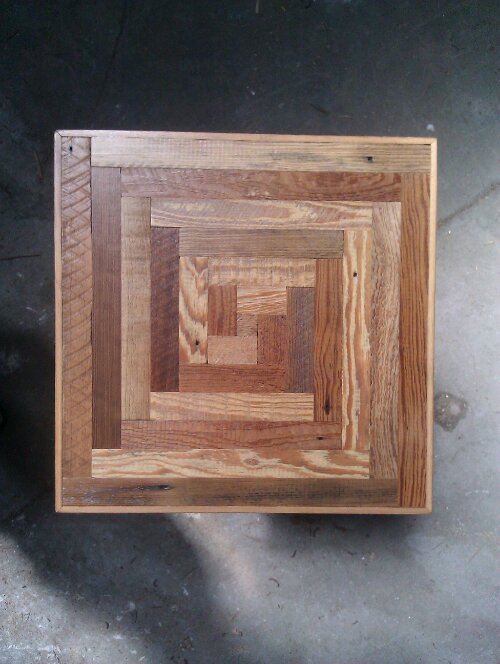
Fine Woodworking October 2011
The Lather’s Table I made for the Green Project’s Salvations Contest is in this month’s issue of Fine Woodworking Magazine, featured in the Reader’s Gallery on Page 77. Fine Woodworking is an awesome magazine to subscribe to if you are into woodworking, and I’m honored to be part of such a prestigious publication this month. Here’s a scan of the cover and page 77:
Filed under salvations, tables
Lath Console Table
Last week I finished the Lath Console Table I was commissioned to build by a very important client (my dad). Similar to the Lather’s table I built for the Salvations Design Competition earlier this year, the project relied heavily on salvaged materials and the slow process of lamination (gluing wood together). The client (pops) wanted me to do a little write up explaining the process of making the table as well as the story behind its inception and parts, so if you are interested in reading that, it is below the pictures. Overall, I like this table better than the first one I built, though they are a completely different design so direct comparison is difficult. With this one, i used the skinny part of the wood as the table top surface instead of the fat (how’s that for proper woodworking terminology!) and I really dig the bowling lane/hardwood floor effect it achieves. I came up with the general design idea for this table while I was building the last one, and after building this one, i’ve got six more designs i’d like to try, all relying on lath. Oh to have all the free time in the world to build furniture… Anyway, here are the pics. Let me know what you think or if you have any ideas for other ways to use lath strips, i’d love to hear them. P.S. – The first lath table I built is featured in the Reader’s Gallery of the current issue (Sept/Oct) of Fine Woodworking Magazine, page 77 I think. Checkitout!
- raw material.
- Dumpster divin’
- square pegs.
- bottom shelf left rough to contrast the smooth top
- The top.
- the finished product
- wedged tenons
- ends left staggered, to contrast the planed top.
- chiseling the peg hole with my Japanese chisel.
- Gotta sign your work!
- The leg tenons with their wedges look like little robots.
- All pieces, ready for assembly
- The top being laminated.
- Used lots of clamps.
- Laying out the table design.
“The Lath Console Table”
John Robert Portman 2011
60”x12”x34”
Pine, Cypress
Laths are long slender pieces of wood that are nailed horizontally between the studs of a house leaving narrow gaps in between strips so that the plaster of the walls and ceiling have something to adhere to when applied. Lath and plaster work is a specialized building trade that is very labor intensive and requires considerable skill. Since the invention of gypsum board, which is faster and cheaper to install than plaster, the use of lath and plaster in residential construction is very rare, even though its durability and quality is far greater than that of drywall.
As New Orleans is an old city, most of its houses were originally built with lath and plaster walls. Since Katrina, the first thing a renovator does to a flooded home is to gut out all of the plaster and lath and discard it in a dumpster. Because plaster is water resistant, the wooden lath behind the plaster is still in nearly the same condition as when it was installed, and thereby still usable. A standard gutted shotgun house yields hundreds of wood lath strips. This table is made from approximately 100 laths that have been fished out of dumpsters from all over New Orleans and re-purposed into a one-of-a-kind piece of furnitiure.
Built using traditional joinery, there are no nails or screws or fasteners of any kind holding the table together, only wood-to-wood connections. The top is made by process of lamination, in which each individual strip is planed smooth and glued to another strip and another and so on. The table top is connected to the legs via a through-wedged dovetail mortise and tenon joint, in which wedges are driven into slots cut into the end of the tenon. The wedges expand the tenon within a trapezoidal-shaped mortise, thereby locking the tenon in place permanently (which is why this is also called a “suicide” joint).
The lath shelf underneath is connected to the legs by a square peg running though the legs and into a square hole chiseled into the shelf. Even the pegs are made out of lathing strips. The only non-lath part of the table are the legs, which are made of light-colored cypress in order to contrast the rich dark browns of the pine lath.
Filed under Millwork, Salvage, tables, Uncategorized
Console table comission
I was recently commissioned to build another lathing strip table and work is well under way. The picture below is of the top of the table. More pics to come upon completion in about a week!
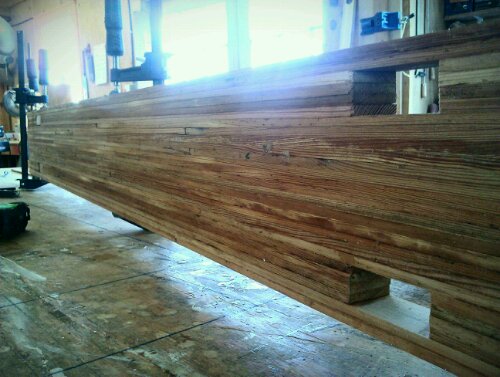
Filed under Millwork, Salvage, tables, Uncategorized

